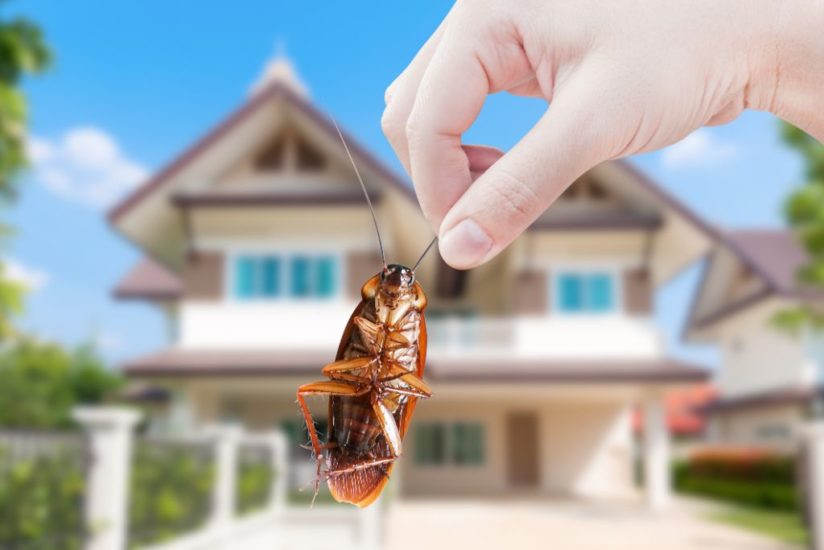Pestwise - An Overview
Pestwise - An Overview
Blog Article
The Facts About Pestwise Revealed
Table of ContentsThe Pestwise PDFsThe Ultimate Guide To Pestwise3 Easy Facts About Pestwise DescribedA Biased View of PestwiseWhat Does Pestwise Mean?What Does Pestwise Mean?The Best Strategy To Use For Pestwise

Q. Define "incorporated insect management" (IPM) and checklist a number of possible control techniques that may be used in an IPM method. A. Integrated parasite management is the integrating of suitable parasite control techniques into a solitary plan to lower insects and their damage to an appropriate degree. Bug control tactics might include: host resistance, organic control, cultural control, mechanical control, hygiene, and chemical (pesticide) control.
6 Simple Techniques For Pestwise
What can you do to keep the pests you are trying to regulate from becoming resistant to the pesticides you make use of? A. Bug resistance can be minimized by utilizing integrated bug monitoring and rotating the sorts of pesticides made use of.
Insects are a critical threat to the farming company, and integrated bug administration aids growers address and minimize these dangers. Integrated parasite monitoring utilizes a number of techniques in complex, thus being a much more efficient solution to the problem. Mosquito Control. Particularly, removing aggressive chemical approaches permits decreasing harm to people and the environment by utilizing natural and safer options instead
Pestwise Things To Know Before You Buy
The objective of incorporated parasite monitoring is to decrease this damage and control appropriate problem levels instead of get rid of all unwanted populaces. This is why it is necessary to comprehend what measures are warranted in each situation and usage hostile ones only when various other incorporated management strategies do not work. Integrated monitoring alleviates the negative effects of a non-IPM approach, and the major benefits of IPM Conveniences of IPM.
An appropriate understanding of the problem scope identifies if the trouble must be addressed. are the following parts of an IPM program due to the fact that it is very important to understand if the organisms make possible dangers and choose the integrated monitoring options or the specific chemical usage. intend to minimize problems by applying different agronomic strategies.
3 Simple Techniques For Pestwise
if prevention was inefficient. Integrated administration alternatives in an IPM program begin with safer to a lot more hostile ones. Target or broadcast chemical splashing might comply with hands-on removal or trapping that hasn't helped. The prior integrated management aspects aid comprehend just how to intend and apply an IPM program detailed: Screen your plants frequently.

Amongst others, IPM cultural approaches include the following area management techniques: soil therapy; selection of suitable plants; crop rotation; interplanting or strip chopping; selection of planting days; weed control; usage of trap plants. Desirable soil conditions speed up plant development, and vigorous plants are extra resistant to invasions. Healthy and balanced seed startings and seeds predetermine successful plant advancement, so it is vital to choose pest-free planting material with strong origins.
Hence, among other applications, crop rotation can be efficiently utilized as an incorporated pest management technique. Vermin spread out slower if rows of various crop types separate their host plants in intercropping or strip cropping, which is also utilized in the integrated bug monitoring system. Alternatively, infestations increase when plants of the same crop type or household grow together.
, as well as tomatoes. Planting trap plants in patches is an additional choice for IPM intercropping. This incorporated insect management approach recommends bring in pests to specific plants and after that regulating them with chemical or mechanical methods.
The 4-Minute Rule for Pestwise
Obstacles are case in points of physical IPM methods. Allow's take a better take a look at them. Getting rid of or choosing pests out manually is a time and labor-consuming alternative that is widely used in integrated management and chemical-free farming. Fully grown insects or their official statement eggs and larvae are accumulated by hand and damaged.

Department of Plant Sciences. College of Missouri. Soil solarization is a reliable incorporated management method to disinfect the field by warming it in an all-natural way. This integrated monitoring method indicates a typical method of damaging insects by predators, parasitoids, microorganisms, and various other biological control representatives (aka antagonistic microorganisms). The duty of organic control in IPM is to.
9 Easy Facts About Pestwise Explained
With time, their population ended up being a genuine annoyance to farmers together with indigenous kangaroos or dingoes. The cane toad is another case illustrating incorporated organic control failing in this regard when it refused to hunt the target types and became a parasite itself. Parasitoids develop on or within their hosts to eventually kill them after growing.
Report this page